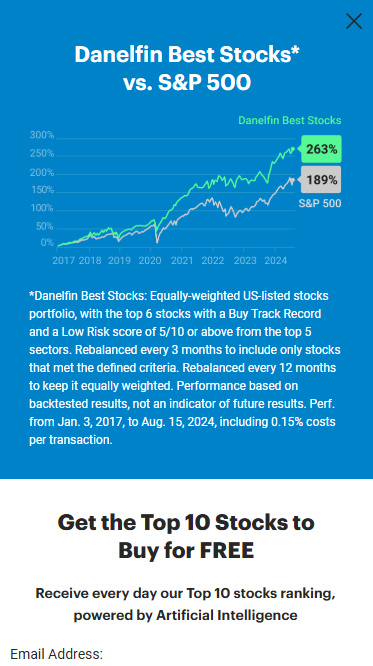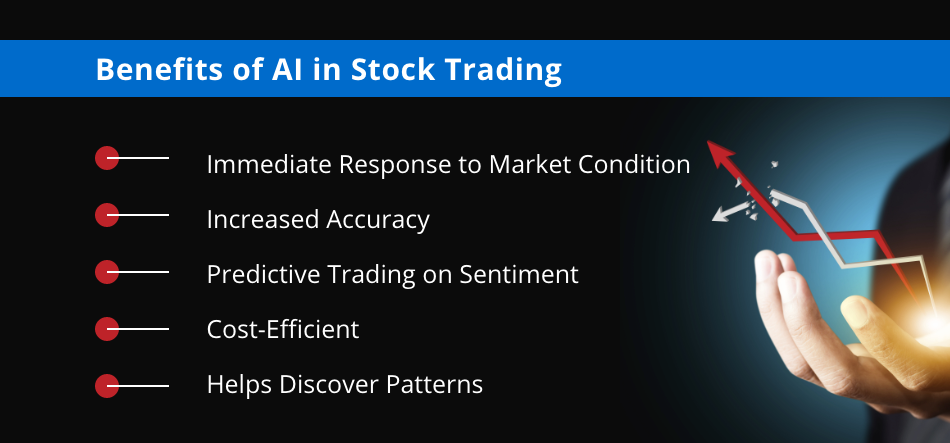20 Excellent Pieces Of Advice For Picking AI Stock Trading Sites
Top 10 Tips On Assessing The Market Coverage Of Ai Stock Predicting/Analyzing Trading PlatformsMarket coverage is one of the most crucial factors to take into consideration when looking at AI-based trading platforms. This will determine how many markets and assets are accessible. A platform that offers comprehensive market coverage will allow investors to diversify their portfolios and discover global trading opportunities and adapt to different strategies. These are the top ten tips to assess the market coverage of these platforms:
1. Evaluate Supported Asset Classes
Stocks: Ensure that your platform supports major stock exchanges like NYSE, NASDAQ LSE and HKEX and includes mid, small and large caps.
ETFs: Verify that the ETF platform you are using offers a variety of ETFs to provide diversified exposure across sectors, themes and countries.
Options and futures. See if your platform offers derivatives including options, futures or other leveraged instrument.
Commodities and forex: Check whether your website offers forex and commodities, as well as precious metals and energy commodities.
Cryptocurrencies Make sure the platform supports popular cryptocurrencies like Bitcoin, Ethereum, and altcoins.
2. Check for Coverage Area
Global markets: Ensure that the platform is inclusive of major global markets such as North America, Europe and Asia-Pacific.
Regional focus Ensure that the platform is specialized in certain regions or markets which align with your trading interest.
Local exchanges - Check to find out if there are local or regional exchanges available in relation to your location and your strategy.
3. Assess Real-Time against. Delayed Data
Real-time information - Make sure your platform is able to provide real-time market information to help you make timely choices, especially for active traders.
Data delayed: Find out if you can get delayed data for free, or at a discounted cost. This might be enough for investors who are looking to invest long-term.
Latency of data. Examine how your platform can reduce the amount of latency for real-time feeds.
4. Evaluation of Data from the Past
The depth of historical data: Verify that the platform offers extensive data (e.g. more than 10 years old) for backtesting.
Granularity: Determine whether the historical data contains intraday granularity, as well as daily, weekly and monthly.
Corporate actions: Verify that historical data takes into account splits in stock (if applicable) dividends, stock splits and any other corporate actions.
5. Examine Market Depth and Order Book Information
Level 2 data: Ensure the platform provides Level 2 data (order book depth) for improved price search and execution.
Check for real-time bidding and asking spreads. This will help ensure that pricing is accurate.
Volume data: Find out if your platform offers comprehensive volume data that can be used to study liquidity and market activity.
6. Check the coverage of Indices and Sectors
Major indices: Make sure the platform is able to handle major indices (e.g., S&P 500, NASDAQ 100, FTSE 100) to benchmark and index-based strategies.
Information from specific industries: To perform a targeted analysis, you should verify whether the platform contains information for specific sectors (e.g. technology, health care, technology).
Custom indices. Check if the platform allows you to create and monitoring custom indices based on your needs.
7. Integrate News and Sentiment Data
News feeds - Ensure your platform has the most up-to-date, market-moving news feeds (e.g. Bloomberg, Reuters).
Utilize the platform's sentiment analysis tool using information from news, social media or other sources.
Strategies based on events (e.g. earnings announcements or economic reports) Make sure that your platform allows trading strategies that are based on news events.
8. Look for Multimarket Trading capabilities.
Cross-market Trading: Check that the system allows you to trade across multiple markets and asset classes from an unifying interface.
Conversion of currency: Check if the platform can handle multi-currency accounts as well as automated currency conversion to trade internationally.
Support for time zones: Check if your platform allows you to trade in multiple time zones.
9. Examine the coverage of alternative sources
Look for other data sources.
ESG Data Find out whether there is any environmental, social or governance (ESG data) that are part of the platform for investing socially responsible.
Macroeconomic data - Ensure that the platform is equipped with macroeconomic information (e.g. inflation, GDP) to perform fundamental analysis.
Review user feedback and market reputation
User reviews: Study feedback from users to determine the coverage of the platform's market and quality of service.
Find out about the platform's industry standing and reputation. This includes awards and recognition by experts in the field.
Case studies: Search for case studies or testimonials that highlight the platform's success in particular areas or asset classes.
Bonus Tips
Trial time: You may use an demo, trial or free trial to check the coverage of markets and the data quality.
API access: Make sure the API is available on the platform that permits you to programmatically access market data to perform custom analysis.
Customer Support: Make sure that the platform is able to assist with any market-related issues or data problems.
These guidelines will assist you evaluate the market coverage provided by AI trading platforms that predict/analyze stock prices. So, you'll be able select the one that offers the information and markets you need for successful trading. Market coverage is important to diversify portfolios, discover new opportunities, and adjust to market conditions. Take a look at the top rated best ai for trading url for site info including ai investing, ai chart analysis, ai investing platform, AI stock trading, best ai trading software, AI stock market, ai for stock predictions, ai for trading, chart ai trading assistant, ai chart analysis and more.

Top 10 Tips For Assessing The Risk Management Capabilities Of Ai Stock Prediction/Analyzing Platforms
Any AI stock-predicting/analyzing trading platforms must have risk management in place that is crucial to safeguard your capital and limiting losses. A platform that has robust tools for managing risk will help navigate the volatile market and enable users to make better choices. Here are 10 tips on how you can evaluate the platform's risk management capabilities.
1. Review Stop-Loss and Take-Profit Features
Customizable Levels: Ensure that the platform lets you set individual stop-loss levels and targets for take-profits in trades or strategies.
Trailing stops: Make sure the platform supports trailing stops that automatically adjust when the market shifts in your favor.
It is important to determine if there are any stop-loss options that will guarantee your position to be closed at the agreed rate, even if markets are volatile.
2. Effective Tools to Assess Position Size
Fixed amount: Make sure your platform allows you to create the positions you want to take based upon a sum of money that is fixed.
Percentage of portfolio The best way to manage your risk by determining positions sizes in proportion to a percentage.
Risk-reward-ratio: Check if the platform allows users to set individual risk/reward ratios.
3. Make sure you have Diversification Support
Multi-asset trading. Check that your platform can handle various asset classes, including ETFs and Forex, Options, and stocks.
Sector allocation check to see whether there are any tools that allow for monitoring and managing exposure to the sector.
Diversification of geographic areas. Make sure the platform is able to trade on international markets that spread geographical risk.
4. Review leverage and margin controls
Margin requirements: Ensure that the platform is clear about limitations on margins when trading leveraged.
Find out the leverage limits. This feature to limit your exposure to risk.
Margin call notifications: Make sure that the platform sends out timely margin call notifications to stop account liquidation.
5. Assessment and Reporting of Risk
Risk metrics: Be sure the platform provides important risk indicators to your portfolio (e.g. Value at Risk (VaR) Sharpe ratio and drawdown).
Scenario analysis: Ensure that the platform allows you to create different scenarios for the market to assess the risk.
Performance reports: Ensure that the platform gives you detailed information on the performance of your investments, including returns that are risk adjusted.
6. Check for Real-Time Risk Monitoring
Portfolio monitoring - Ensure that the platform you choose has real-time monitoring in order to ensure your portfolio is protected.
Alerts: Make sure you can receive real-time notifications for events that are associated with risk (e.g. Stop-loss triggers or margin breaches).
Risk dashboards: See whether the platform provides customizable risk dashboards for an in-depth view of your risk profile.
7. Evaluation of Backtesting and Stress Testing
Stress testing. Check that your platform allows you to stress test your portfolio or strategy in extreme market circumstances.
Backtesting - See whether your platform permits you to backtest strategies with old information. This is a great way to assess risk and assess the effectiveness of your strategy.
Monte Carlo simulators: Verify that the platform uses Monte Carlo to simulate a variety of possible outcomes so that you can determine the the risk.
8. Assessment of Compliance with Risk Management Regulations
Ensure that the platform meets the requirements of regulatory compliance (e.g. MiFID II regulations in Europe, Reg T regulations in the U.S.).
Best execution: Make sure that the platform is in line with the highest standards of execution, and ensures that transactions are executed at the highest possible price, minimizing slippage.
Transparency Verify the platform's transparency as well as clarity in the disclosure of risks.
9. Verify the risk parameters controlled by the user.
Custom Risk Rules: Ensure that you are able to define your own rules for risk management (e.g. the maximum amount of daily loss, or a maximum size of tradable position).
Automated risk controls: Check to see if your platform can enforce risk management rules based automatically on parameters you have defined.
Manual overrides Determine if you can manually override the automated risk control in an emergency.
10. Review User Feedback and Case Studies
User feedback: Read user reviews to evaluate the platform's ability to take care of the risk.
Testimonials and case studies The case studies and testimonials will demonstrate the platform’s risk management capabilities.
Forums for community members. See if the platform has a vibrant forum for users, in which traders can exchange strategies for risk management and suggestions.
Bonus Tips
Trial period: Take advantage of a no-cost demo or trial period to try the platform’s risk management capabilities in real-world scenarios.
Customer support - Ensure that your platform provides a solid assistance for any questions or issues relating to risk.
Find educational resources.
By following these tips you can assess the ability of AI platforms for stock prediction and analysis to manage the risk. This will ensure you select a system that protects your capital, and minimizes any potential losses. To ensure that your trading is successful and manage volatile markets, strong risk management tools are essential. Have a look at the recommended stock predictor for more tips including AI stock price prediction, ai options, ai options trading, investing with ai, ai copyright signals, ai in stock market, AI stock analysis, ai tools for trading, best ai penny stocks, ai copyright signals and more.
